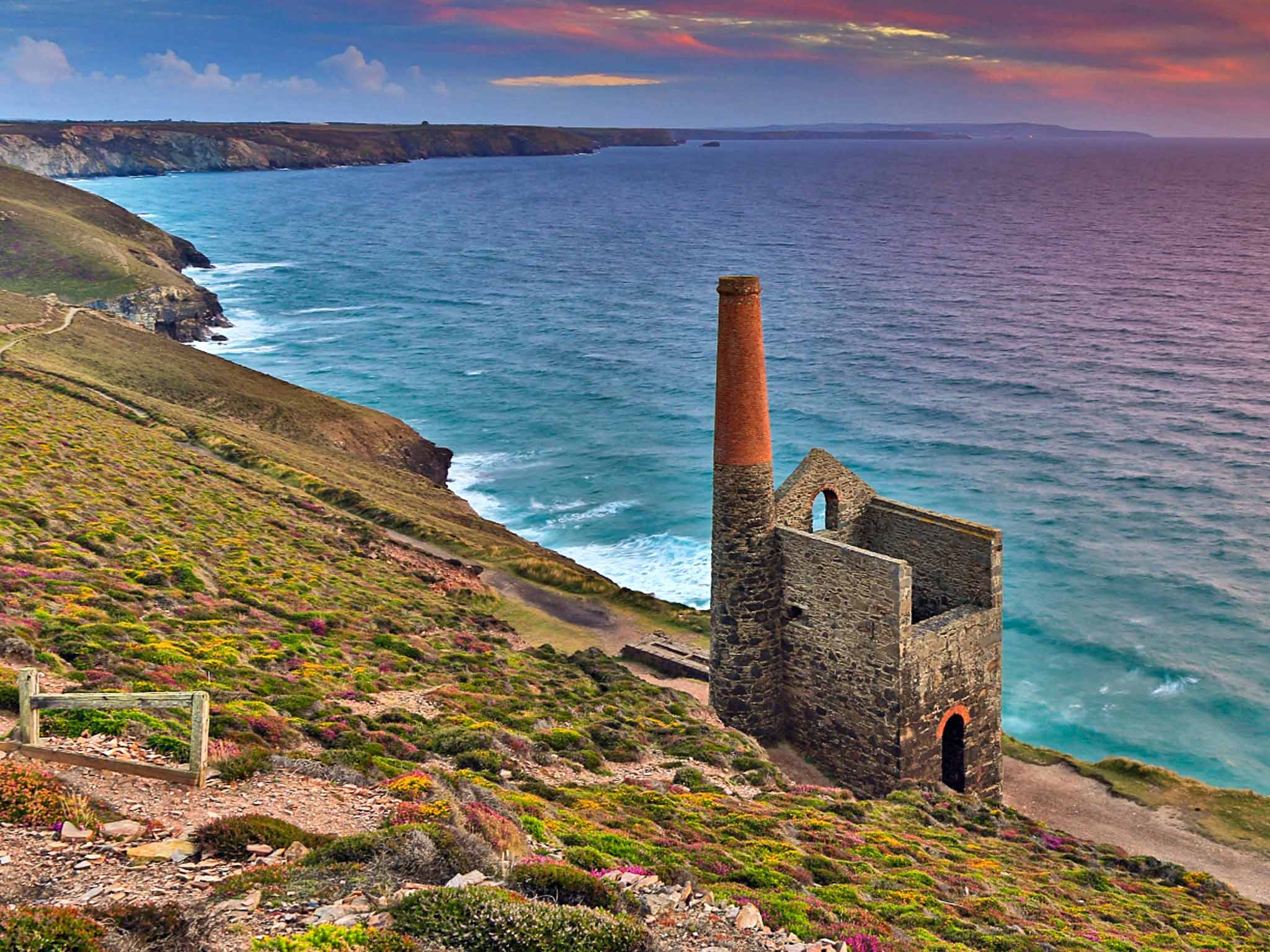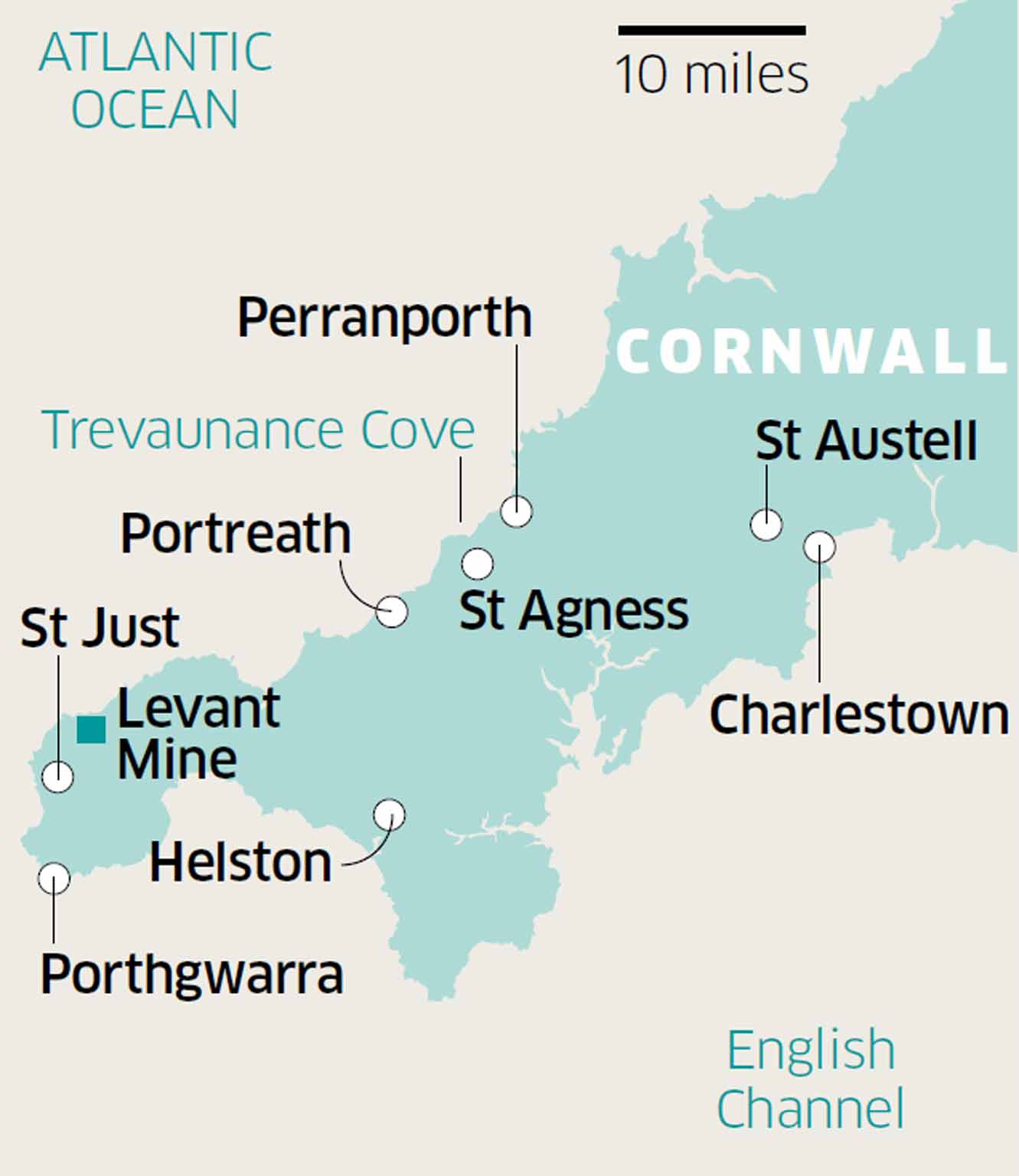Poldark's Cornwall: A land that holds a mine of information
Nature has snatched this romantic coast from industry, and swept Harriet O'Brien off her feet

Your support helps us to tell the story
From reproductive rights to climate change to Big Tech, The Independent is on the ground when the story is developing. Whether it's investigating the financials of Elon Musk's pro-Trump PAC or producing our latest documentary, 'The A Word', which shines a light on the American women fighting for reproductive rights, we know how important it is to parse out the facts from the messaging.
At such a critical moment in US history, we need reporters on the ground. Your donation allows us to keep sending journalists to speak to both sides of the story.
The Independent is trusted by Americans across the entire political spectrum. And unlike many other quality news outlets, we choose not to lock Americans out of our reporting and analysis with paywalls. We believe quality journalism should be available to everyone, paid for by those who can afford it.
Your support makes all the difference.A pillar of sunshine moved across the cliff face, highlighting an arch of blue oxidised copper. My companion, Hetty, smiled at my amazement: there are plenty more seams like this, she said.
In the waters just beneath, a seal popped up, looked about and, as if similarly nonchalant about the band of copper, smoothly disappeared. From my vantage point above Trevaunance Cove I gazed down in hope of spotting it again, then stretched my eyes up to the mine buildings dramatically punctuating the inland horizon.
Seal colonies developed after the mines in the district closed down, Hetty explained. She runs kayaking tours here and often sees seals in the caves, swimming below the remnants of old shafts. Energetic winds had thwarted our kayaking plans that day, so instead we were taking a spectacular walk around St Agnes, on Cornwall's northern coast. Hetty was keen to share insights about the area, particularly its remarkable industrial heritage. The mines, she said, followed seams of copper and tin inland and under the sea, with tunnels kept relatively free of water by steam pump engines, developed in the early 19th century.
In the wake of the new Poldark television drama series, I had come to Cornwall to revel in the landscape. Winston Graham wrote the first of his tales about the tin-mining Poldark dynasty in a beach hut at Perranporth, just around the coast from St Agnes. Back in the 1970s his novels became one of the most successful small-screen dramas ever, attracting an audience of some 15 million, of which I was one. I put it down to giddy youthfulness that while I followed the saga of Ross and Demelza, the mining aspect of the story passed me by. It won't this time around – in exploring Poldark country I became increasingly intrigued by Cornwall's industrial legacy.
My first stop was Poldark Mine, originally called Wheal Roots. It lies north of Helston in the Wendron Valley, where a staggering 640 mining concerns are recorded in parish records. Like many other such workings, Wheal Roots became a "lost" mine after the 1860s (they say gardening in this region comes with the occupational hazard of the sudden shafts you might uncover). This mine was rediscovered in the 1970s, developed into a visitor attraction and, with permission from Graham, was cleverly renamed Poldark Mine, which contributed to its post-industrial success.
Latterly, though, it fell on hard times. It was acquired in May by retired businessman David Edwards, who is set to transform its fortunes. His timing was perfect: the mine became one of the settings of the new series. Its strength, both as a tourist attraction and a film location, is that you can access the tunnels, descending as far down as 160 feet. I emerged humbled by the hardship the workers endured and amazed by tales of the extent to which mining became part of the Cornish DNA. "They say that wherever in the world you find a hole in the ground, there will be a Cornishman at the bottom," said my guide Alan, alluding to the fact that in the 19th-century Cornish miners took their expertise to Australia, South America, Mexico, and more – and often stayed.
Onwards and westwards, I headed to Porthgwarra. Set down twisting lanes, this hamlet is so romantically remote you feel you've time-travelled back to Poldark's late-18th century. It was here that the pilchard fishing scene was filmed, and it was here that I stayed, my whitewashed cottage so perfectly positioned that it would surely win any contest for prettiest accommodation in Cornwall. Yet for all the fresh-air beauty, there's a strong mining connection. You reach the small beach via a slipway or along a tunnel running through granite rock. Created to give local farmers easy access to seaweed used for fertiliser, this was drilled in the 1890s by miners from nearby St Just.
The next day I explored St Just's bleakly bewitching landscape, studded with chimneys and crumbly looking mine buildings that in many cases are cliff-edge dramatic. The film crew had been here, too, shooting around the Botallack and Levant mines. It was Levant I especially wanted to see, for here there's a working steam-powered beam engine which hauled rock up from the shafts. I watched it in action – a fabulous arrangement of levers and hissing pistons – and I talked to the volunteer guides, learning how Levant's tunnels extended underwater a good mile from the cliff.
Moving up the coast I called in at Portreath, where I met Marion Symonds who runs Portreath Bakery and is passionate about the Cornish pasty. This poor man's food was the miners' staple work meal. Often unable to wash their hands, they would eat a pasty holding on to the crimp – the pastry seam on the side (never on the top for a proper Cornish pasty) which they would then discard. Arsenic was present in many of the mines, extracted for use in glass manufacturing and dyes.
Marion had recently returned from Mexico, where she explored the links between Cornwall and Hidalgo province. In 1826, a group of Cornish miners arrived there, revolutionising mining life in the region – and they brought the pasty with them. Today, there's a pasty museum and even an October pasty festival in Hidalgo.

North of Portreath is seal-enriched St Agnes, which stands in for Nampara Valley in the series. From here, I turned southwards to visit Charlestown on the outskirts of St Austell. Used for scenes of Truro, this is an untrumpeted gem; a beautifully conserved Georgian harbour, complete with a small collection of tall ships. It's a haven for film crews, too, and its screen appearances have ranged from The Onedin Line to the 2010 version of Alice in Wonderland. Its presence in Poldark is particularly apposite: Charlestown was constructed in the 1790s to service the mining industry. I strolled the old walls feeling out of sync in jeans and raincoat and then, with a sense of culture shock, drove back into the 21st century.
Where to stay
Harriet O'Brien stayed at Corner Cottage, Porthgwarra, owned and run by St Aubyn Estates Holidays (01736 888 515; staubynestatesholidays.co.uk). Sleeping two, it costs from £450 per week. She also stayed at The Rashleigh Arms (01726 73635; rashleigharms .co.uk) in Charlestown, which offers doubles from £80 B&B.
What to do
Koru Kayaking (0779 4321 827; korukayaking.co.uk) offers two-hour North Coast Poldark Country guided kayak adventures from £35pp.
Poldark Mine (01326 573173; poldarkmine.org.uk), admission for adults £15.
Levant Mine and Beam Engine (01736 786156; nationaltrust.org.uk), adults £7.70.
Where to eat
Terrace Restaurant (01209 842 354; gwelanmor.com) at Gwel an Mor, Portreath, is lauded locally for its Cornish-Spanish cuisine.
Portreath Bakery (01209 842612; portreathbakery.co.uk).
More information
Cornwall and Hidalgo, the story of Cornish miners in Mexico, is published by San Angel Ediciones – £21.99 from sanangelediciones.com.
Episode 2 of Poldark is on BBC1 tonight at 9pm.
Join our commenting forum
Join thought-provoking conversations, follow other Independent readers and see their replies
Comments